Podcast Special: Science – student engagement, teaching excellence and outside expertise
A podcast with Brett McKay from Kirrawee High and myself covering contemporary science K-12.

Podcast Special: Science – student engagement, teaching excellence and outside expertise
A podcast with Brett McKay from Kirrawee High and myself covering contemporary science K-12.
Butterfly Garden Project Based Learning
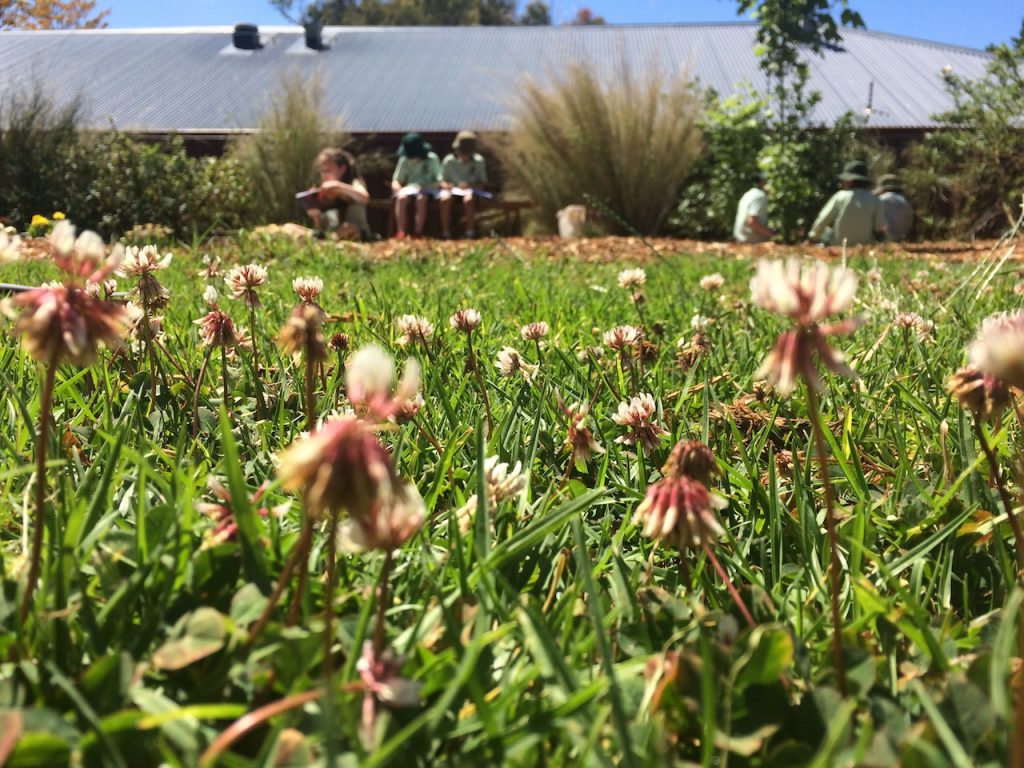
I am always keen to have my students undertake at least one major project based learning experience each year. In mid 2016 I had my class work on revitalising an overgrown garden area into a ‘Butterfly Garden’. I was inspired by my visit to High Tech High in Chula Vista a few years ago where I saw a comprehensive PBL program in place including a butterfly component.
Exploring regional butterflies and appropriate feeder plants introduced a strong environmental and biodiversity perspective as students considered the ecology of a butterfly habitat.
Over the course of six months it was rewarding to document and reflect on the process that covered a multitude of learning areas such as measurement, science and information reports but also the physical tasks of gardening and assembling materials.

Of course PBL is a terrific way to ‘access’ this type of learning and each student was able to achieve success through various entry and exit points that they could identify with. Key Learning Areas such as mathematics, science and English and PD,H,PE came into play and offered a broad scope of learning opportunities.
There was extensive use of measurement; both through aerial photography via a DJI Phantom Drone and scale and grid tasks that calculated the area of the garden and path. This then evolved into a volume activity as the depth of mulch and crushed concrete were calculated.
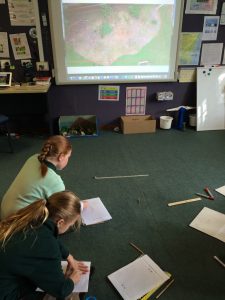
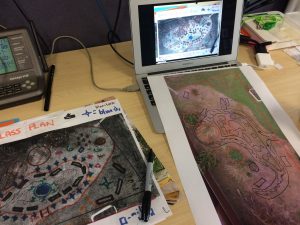

The students used websites to source local materials, cost the materials and to then ring the landscape company to place the order.
Highlights included in-depth research into local butterflies and suitable host plants. The class explored colour and the types of colour needed to attract butterflies.
Importantly it all came together as student’s physically engaged with and enjoyed the gardening – from clearing weeds, moving barrow loads of mulch and pouring crushed aggregate to make the path. The area came to life as the seedlings and young plants were put in and began to develop. Students then followed a procedure to assemble benches so that it was a welcoming learning space.



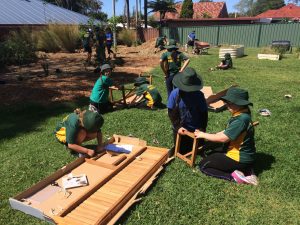
A daily watering regime was added to the class task list and deep saucers were added for birds and to provide water for butterflies.
As the area established it was used for nature sketching, quiet time, reading and sensory awareness activities by the class.
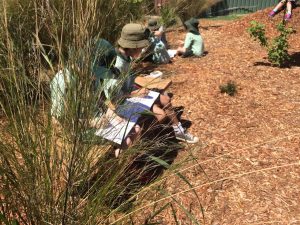

Now in early 2017 the garden is evolving as species continue to mature. Now is the time for other students and classes to take the opportunity to enjoy this special place. Those who contributed to its making remain keen to use and proud of their learning and effort.

The garden six months on!
Mt Ousley PS has recently been partnered Dr Ali Haydar Goktogan who is a Research Fellow at the Australian Centre for Field Robotics (ACFR) at Sydney University. I recently Skyped with Ali and we explored how we might work together to enhance learning opportunities for our students studying robotics and use the 5Es to explore, engage etc. We were both enthusiastic about the partnerships and it already looks like we have arranged a school visit from Ali to demonstrate some robotics models, a field trip to ACFR and also a visit to the Powerhouse Museum to use the Pathways to Space – Mars Simulation Robotics that Ali helped build.
Increasingly partnerships between schools and scientists are being viewed as an effective way to bridge gaps in science teaching and learning and importantly add a real world context to student learning.
The Australian model of Scientists in Schools has proven highly successful and a recently released report paints a very enthusiastic model accepted by both the teaching and science communities.
Furthermore a new international teacher -scientist conference has just been announced due to increased focus on this important area.
Building partnerships, professional networking through a PLN and embracing opportunities are what makes for successful and fulfuling teaching and learning in this day and age. Long live sharing!
One of the most rewarding aspects of teaching science to school students is the ability to use citizen science projects and programs to engender real learning and validity to the learning experience.
When students are asked to collect, consider and submit data or utilise a data set to make conclusions, the experience should offer greater opportunities for aspects of learning such as student engagement, deep learning and higher order thinking aspects to suggest a few. Here is a great read from KQED.
I know that when I work with real data or submit data I gain a greater sense of satisfaction through knowing that I am engaged with real science; I am observing and recording, collecting and analyzing, hypothesizing and concluding.
A new an exciting Australian project is TeachWild, monitoring marine debris in our waters and especially focusing on small plastics that are so inviting and fatal to seabirds and marine life. A great ABC Catalyst article can be found here.
I have written about Birds in Backyards in Australia and the Cornell Lab of Ornithology Lab in Ithaca, NY previously and the innovative programs they both have on offer. Having lived on the coast for many years I have always maintained an interest in marine and environmental education.
With data sets available that explore great white shark movements, penguin counts and recently the ability to contribute to whale shark population and movement counts in Western Australia diverse teaching opportunities are available.
The next time you are thinking about teaching science, consider citizen science and how you as an educator can contribute not only to a student’s deep knowledge and learning but also through encouraging them to make a real difference in the world.
Over the past few years at my previous school Sussex Inlet PS (coastal with remnant forest and nature trail) I ran regular bird studies activities either before school as a special interest group activity or with my regular class as appropriate. The sessions came out of my interest in environmental education, a visit to the Cornell Lab of Ornithology in New York state and the availability of the Birds in Backyards website and its online school survey function.
What started out as regular bird watching and identification transformed into science focused data collection with a purpose.; students not only wanted to identify birds and listen to their calls but then collate the session data and log each survey.
I’ve now taken on a new role at Mt Ousley PS in urban Wollongong. The school is in the middle of a suburban residential block and is surrounded by houses; a different ecological environment yet still interesting and with a range of urban species.
I introduced my 1/2 class to bird observation through a walk around the grounds, we took with us a species identification chart and a single pair of binoculars. Students quickly became absorbed in looking and listening for birds and as I’ve found previously, ‘the outdoor classroom’ encouraged students to actively respond to their surrounds.
Excitingly and for our next session we had the use of iPads and a wireless school network for web access to the Birds in Backyards site. The students, armed now with various defined roles such as identification chart observer, bird spies ( via five pairs of new binoculars), and iPad users, the students responded to an enhanced learning experience.
The iPads proved a success as students used the devices as identification tools, enter data and survey results while others played mp3 birdcalls of species observed and took photos as we moved to different areas. Combine this with Google Maps providing a satellite location shot we had a mobile learning experience that was truly valid, engaging and rewarding.
I now have students asking to go birding, that have purchased their own binoculars and are producing bird artworks and observing birds at home…… an education that goes beyond the classroom, beyond the school and into the home.
Creative, critical and curious students…… now that is rewarding!